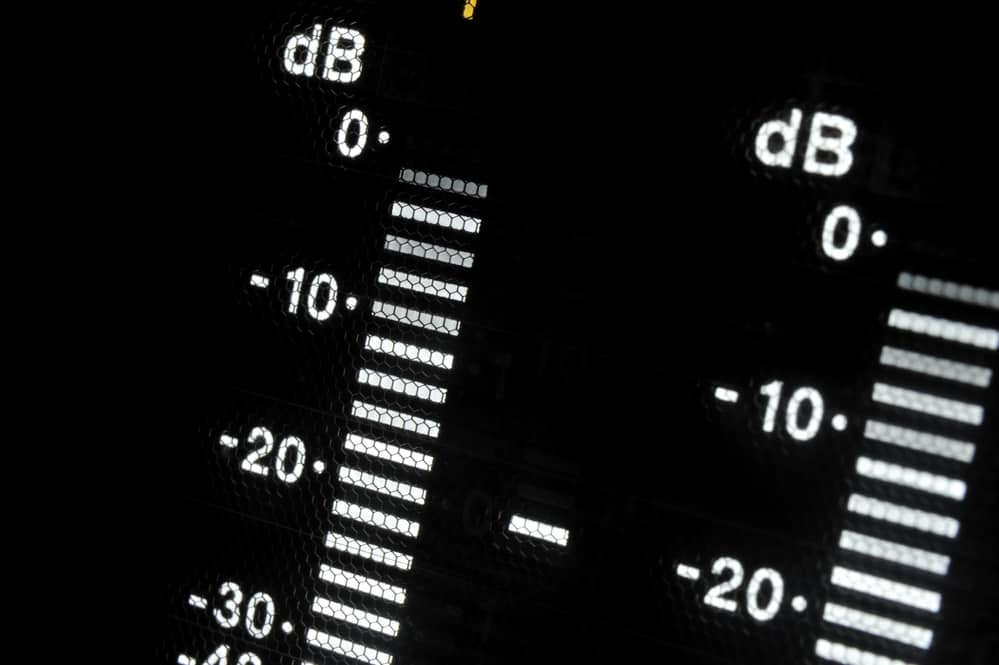
*As an Amazon Associate we may earn from qualifying purchases when you buy through links on our site.
If you’ve ever hired someone to put an aerial on your roof, you may have observed them take out a device with a digital display, and watch the numbers while adjusting the antenna accordingly.
As its name suggests, a signal strength meter (unlike a multimeter) is used to measure the relative strength of any radio frequency wave travelling through the air, like for satellite radios and TVs.
But a TV signal strength meter isn’t just for professional antenna installers.
It can be quite useful not only for mounting your next TV antenna, but also for situations like when you’re using an antenna to watch free TV in an RV.
In case you’re interested in using one of these devices, I detail some important things to keep in mind below.
TV Signal Strength Meters
Here’s a typical signal strength meter from Winegard:

The signal strength is quite literally shown in digits, for each channel you choose (bottom).
You might also find this video about signal strength meters useful:
Now, to understand these devices a bit more, let’s briefly discuss details on some other variables.
Reception “Efficiency”
Besides signal strength, other measurable units affect your antenna’s ability to receive TV signals.
These units are the Modulation Error Ratio (MER) and Bit Error Rate (BER).
- The MER is a measure of how a transmitter or receiver performance compares to how it should perform under perfect conditions with 100% optimization. Various imperfections hamper this optimization, such as noise, phase noise, distortion, carrier suppression, image rejection, or signal path deviation.
- The BER is the number of received bits that have been altered due to interference, noise, bit synchronization errors, or distortion. It’s the percentage of bit errors of all transmitted bits over the time interval under observation.
The best viewing experience is attained when you maximize the signal strength and minimize modulation error and bit error.
Putting Them Together
Without a TV signal strength meter, it’s impossible to tell if you’re getting perfect reception as you’ll be operating in the dark.
Your perceived crystal clear view on your TV might not be the best you can get, but you may not realize that.
It helps to adjust your TV antenna for the best reception while using a signal strength meter, and thus locating the strongest level while aligning the antenna.
Radio Frequency Signal Strength
The strength of radio frequency signals (i.e., TV signals) is measured in terms of noise margin decibels (NM dB) and power ratio decibels-milliwatts (Pwr-dBm):
The first measurement will tell you how “clean” the signal is. It refers to the amount of residual static in the signal that’s not associated with the actual content.
Pwr-dBm is the actual signal strength.
Situations Where a Signal Meter Is Useful
You’ll appreciate a TV signal strength meter even more when switching to an over-the-air (OTA) antenna from cable or satellite TV.
If that’s the case, you may have never set up a TV antenna before. The meter will identify those locations around your home with the strongest signal, thus helping you find optimal placement.
Maybe you’re constantly on the road and need to measure signal strength at several sites. Most of these meters are reasonably portable and can be easily carried wherever you’re going.
A booster or amplifier is recommended where the TV signal strength is low enough to where you’re (unreasonably) losing channels.
A TV signal strength meter can help determine if you need a booster by identifying whether local reception is possible but is too weak without amplification.
Terminology
Poor signals have certain characteristics that are measurable using a TV signal strength meter.
You might run into certain terms when researching how to get the perfect signal:
- Noise: This is an error or some undesirable electromagnetic interference that mixes with a useful signal so that they are transmitted together.
- Phase noise: Refers to random fluctuations in the phases or timelines of a signal as it is being transmitted.
- Carrier suppression: When the carrier level is reduced below what is required for extraction by the receiver.
- Image response rejection ratio (IMRR): A measure of a receiver’s performance. Specifically its ability to reject unwanted images mixed with the wanted signals.
- Signal path deviation: This refers to reducing the signal’s power and density from the transmitter to the receiver due to several factors.
- Interference: Modification of a signal in a disruptive way as it moves from the source to the receiver, e.g., adding an unwanted signal to a useful one.
- Distortion: Unwanted alteration of the original characteristics of the waveform of a signal that bears information.
- Bit synchronization errors: This is where the signals are altered due to any or a combination of the above errors.
Final Thoughts
You need not trouble yourself with specific errors. They exist in various proportions in almost all signals.
Your most critical skill is finding the position with the least interference to optimize your signal strength and picture clarity.
TV signals are invisible, so a signal strength meter is helpful in quantifying what is going on.
Such a device is a worthy investment if you’re keen on saving time wasted trying to figure out how to position your TV antenna.
You’ll also be less frustrated when setting it up as a strength meter will tell you whether your equipment is faulty or the signal is bad. It ensures you get the most value out of your equipment.
